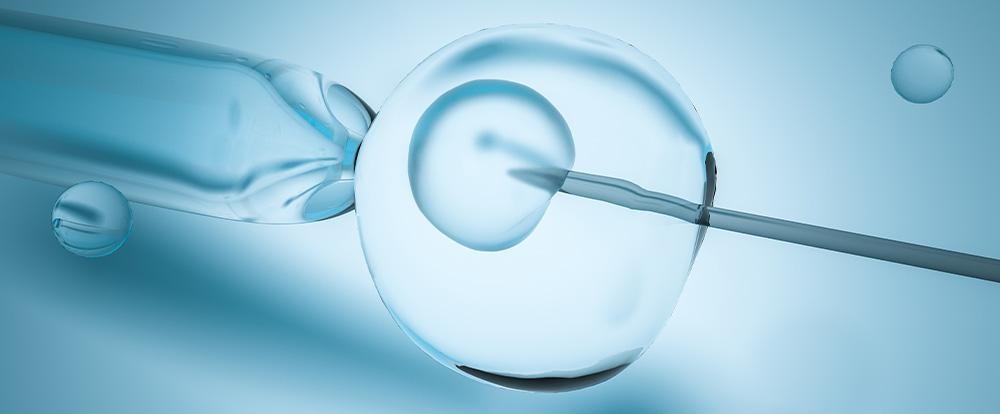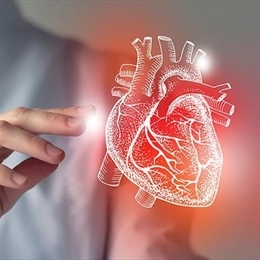IVF

Overview
Infertility is manifested by the absence of conception in obstetric history or the inability to conceive despite a successful previous conception. Almost 25% of all women will face infertility at any time of their lives.
Women achieve maximum reproductive efficiency around 25 years of age, followed by a significant reduction in reproduction, especially at the age of 35 years. The chance of conception for a couple is 57.6% on average in 3 months, 72.1% in a 6-month period, 85.2% at the end of a year, and 93% at the end of 2 years. In other words, especially young couples should take their time.
For young couples under the age of 25, infertility workup can be postponed up to 2 years. For couples above the age of 30, it is recommended to wait for 6 to 12 months before infertility tests are started.
The influence of age on fertility is contradictory for men. Men achieve maximum fertility level around age 35, followed by a remarkable reduction after age 45. However, it is known that there are men who can be fathers even at 80, and accordingly, the "age" of a male person is not as important as for women.
Reasons of Infertility
Male factors account for 25-40% of all cases, while female factors account for 40-55%; combined male and female factors are responsible for 10 to 15% of cases, and 10 to 10% are idiopathic cases. In other words, both men and women are almost equally responsible for infertility.
What is in Vitro Fertilization?
In vitro fertilization implies a complex procedure where eggs produced by ovaries are collected using special needles. Those eggs are fertilized with the sperm of the male subject at laboratory conditions, and the resultant embryo(s) is/are transferred to the uterus. One or more an egg is harvested using a special needle under anesthesia with ultrasound guidance, and the sperm of the father fertilize them in a laboratory setting. The fertilized eggs (embryos) are placed into the mother's womb using a catheter in 2 to 5 days.
Who are Good Candidates for the Procedure?
• Patients with occluded or surgically removed Fallopian Tubes,
• Patients with endometriosis or who cannot conceive with surgical treatment,
• Patients with ovarian problems who do not respond to medical treatment,
• Patients diagnosed with idiopathic infertility,
• Patients with low sperm count or no sperm in the semen.
What are the Stages of the in Vitro Fertilization?
• Maturation of follicle
• Oocyte pick-up (collecting the eggs)
• Preparation of sperm and fertilization of eggs
• Thinning the embryonal membrane
• Embryo transfer
• Pregnancy test
The age, ovarian reserve, blood hormone levels, and height/weight ratio are considered to determine an appropriate treatment protocol and the dose of medication for patients who will receive in vitro fertilization therapy.
For long-term protocol, the medications that suppress ovarian functions are administered in the form of nasal spray or subcutaneous injection for approximately 10 to 12 days. When the patient menstruates, the second part of the treatment is started, and the hormone therapy is maintained for 8 to 10 days on average, which will ensure the maturation of eggs. Next, oocytes are picked up.
For short-term therapy protocols, egg maturation hormones are started on the second to third day of menses, and ovarian suppression hormones are added to the treatment in subsequent days to suppress spontaneous ovary secretion.
Patients are monitored with blood hormone analyses and vaginal ultrasound, and when the follicles reach the appropriate size, human chorionic gonadotropin, colloquially known as egg-hatching injection, is administered. Oocytes are picked up 33 to 26 hours later. This procedure is carried out under anesthesia to suppress pain, and it takes about 10 to 15 minutes. Embryos are selected 2 to 5 days after oocytes are picked up, and a thin catheter is inserted through the cervix, and embryos are transferred. Embryo transfer is a pain-free procedure, and patients can watch the procedure as it is performed with ultrasound guidance. Patients are discharged to home after resting in bed for 30-45 minutes following the embryo transfer.
Are Sperms and Oocytes Harvested from the Couple?
Absolutely yes. Submission of marriage documents is one of the prerequisites of the procedure. Irrespective of the underlying factor, a man who cannot produce sperm or a woman who cannot have eggs is not admitted to the treatment. The germ cells of the officially married couples are used for the treatment.
What is the Success Rate of These Techniques?
The success rate of the in vitro fertilization therapy should be determined according to the health-related characteristics of the couple. The success rate of in vitro fertilization is influenced by many factors, including but not limited to ovarian reserve, age, and severe male factors. For couples who are transferred embryos, the success rate is around 55-60% if the woman is ≤35 years old and has a good ovarian reserve, while the figure is about 30% for women older than 40. Considering the high rate of genetic anomaly in this age group, the preimplantation genetic diagnosis should be considered, and thus, the genetically normal embryo is transferred to increase the chance of conception.
Is in Vitro Fertilization the Only Treatment Option for Couples Who Cannot Achieve Conception?
For four couples with difficulty in conception, the underlying problem should be identified with a detailed examination, and the best treatment method that would most likely achieve the conception should be determined, and the couple should be informed. Treatment methods broadly include surgical treatment of problems in Fallopian tubes, ovulation induction and monitoring, insemination, and in vitro fertilization. For couples who meet particular requirements, conception can be achieved with intrauterine insemination, which implies instilling the specifically processed sperm into the uterus after medications induce ovulation.
What is Insemination?
Insemination is, in fact, a procedure that is performed to increase the chance of sperm to fertilize the egg. The woman is given pills or injections to have two or three oocytes mature in the period, while the sperm of the man is irrigated and prepped with unique methods. Thus, sperms with good motility are harvested. The timing of hatching is manipulated with egg-hatching injections, and sperms are placed into the uterus through a unique plastic tube. Sperms can easily reach the egg(s) as their route is shortened.
Indeed, a minimum of a canal or tube should be patent to perform the procedure. Therefore, the uterine cavity should be imaged before the insemination. As it is known that the chance of conception does not increase after three or a maximum of four attempts, it is not necessary to repeat more than four times. Although the insemination appears like a simple procedure, it should necessarily be performed by an experienced gynecologist & obstetrician. It should be known that not all infertile couples are good candidates for the insemination.
How is Oocyte Pick-up Performed?
Oocyte Pick-Up (OPU) implies harvesting oocytes using a special thin needle that is inserted through the vaginal canal with the ultrasound guidance. The procedure is usually carried out under general anesthesia. Therefore, oocyte pick-up does not cause pain.
As anesthesia will be administered, the patient should stop eating and drinking after midnight one day before the procedure.
Expert embryologists evaluate the picked-up oocytes in the laboratory located in the adjoining room, and they are prepped for conventional in vitro fertilization or microinjection.
Patients can be given paracetamol or similar painkillers, as inguinal and abdominal pain can sometimes be felt after the procedure. Patients are allowed to eat and discharged to the home several hours later. The risk of inflammation and bleeding is rare after the oocyte pick-up. For such conditions, necessary treatments are immediately started, but the risk is lower than 1 percent.
The procedure can be conventional in vitro fertilization or microinjection. If serious difficulty is faced in taking a specimen for a spermiogram, sperm can be taken from the testes under local anesthesia. The influence of age on fertility is contradictory for men. Men achieve maximum fertility level around age 35, followed by a remarkable reduction after age 45. However, it is known that there are men who can be fathers even at 80, and accordingly, the "age" of a male person is not as important as for women.
Reasons for Infertility Male factors account for 25-40% of all cases, while female factors account for 40-55%; combined male and female factors are responsible for 10- 15% of cases, and ten to% are idiopathic cases. In other words, both men and women are almost equally responsible for infertility.




























